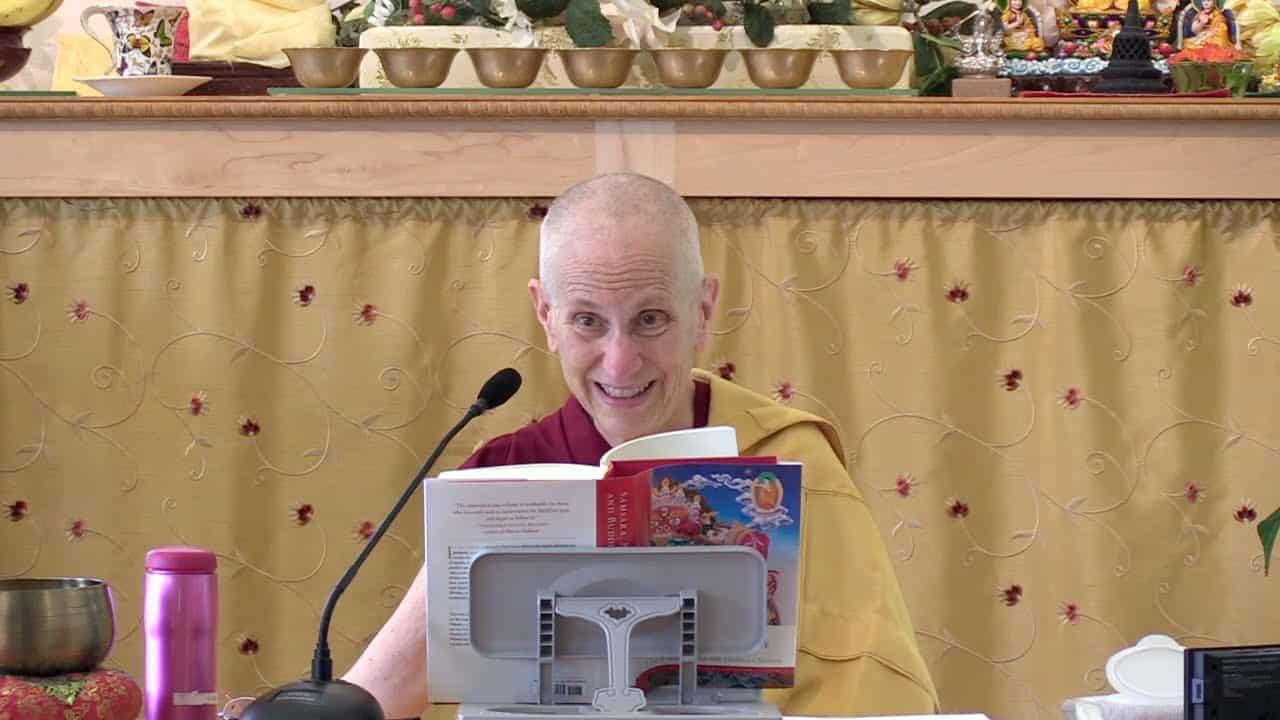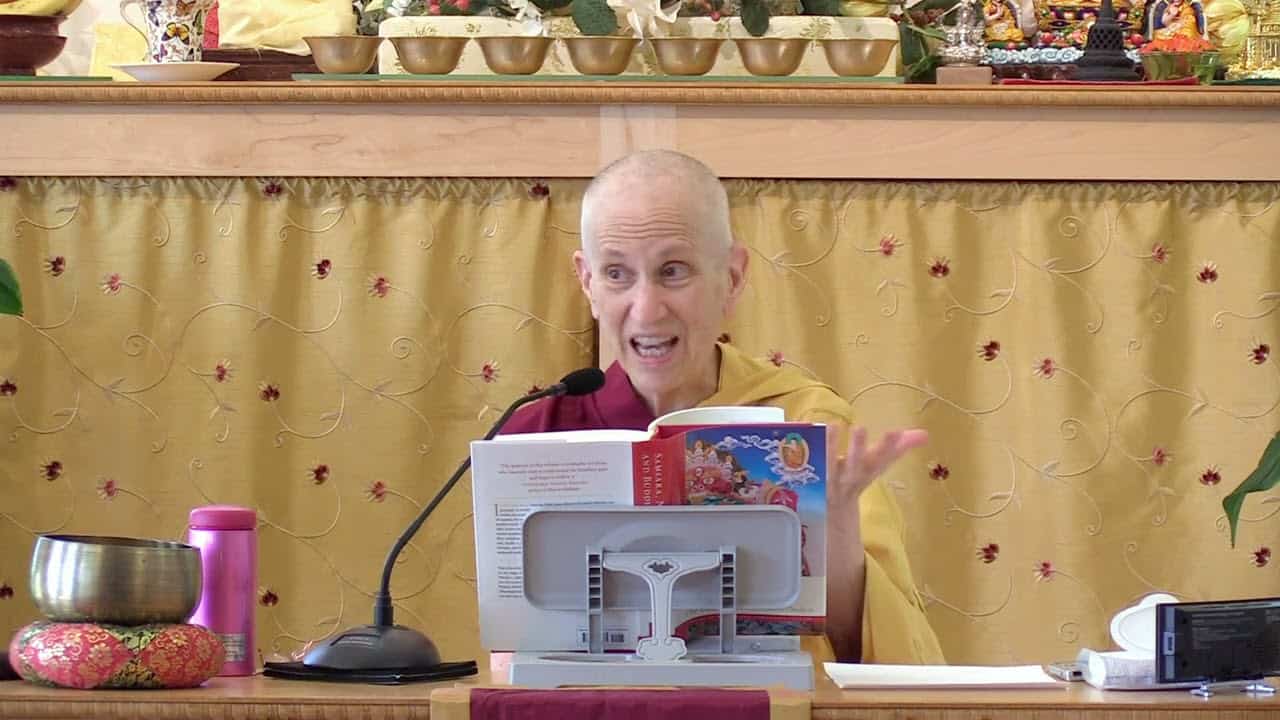True duhkha
04 Samsara, Nirvana, and Buddha Nature
Part of an ongoing series of teachings (retreat and Friday) based on the book Samsara, Nirvana, and Buddha Nature, the third volume in The Library of Wisdom and Compassion series by His Holiness the Dalai Lama and Venerable Thubten Chodron.
- What is true duhkha?
- Birth, aging, death
- Sorrow, lamentation, pain, dejection, despair
- Not getting what one wants, meeting with what is undesirable
- Getting separated from what is desirable
- Five aggregates to subject to clinging
- What is the cause of one’s suffering?
- Craving for rebirth, sensual craving
- Detachment from craving, eightfold noble path
- Evident pain, pleasant experiences not lasting long
Samsara, Nirvana, and Buddha Nature 04: True Duhkha (download)
Contemplation points
- Why is it important to take a hard look at our own situation in samsara before developing compassion for others?
- In the Establishment of Mindfulness Sutta, what does the Buddha say is duhkha? Take some time with each of these. Work through in your own words why these things are unsatisfactory. Make it personal to your own experience.
- Examine your own life for ways in which you have looked for happiness. For example: How long can you lie on the beach? How long can you be in the sun, then in the water etc.. Use personal examples. Can any of it bring lasting happiness or only misery?
- Consider the state of your mind when you crave, for example, reputation, sex, a special friendship. Compare that to the quality of your mind when you desire to learn the Dharma. What is the difference in that quality of desire?
- We usually think that other people are the cause of our duhkha, but what does the Buddha tell us? Make examples from your own experience of the three types of duhkha.
Venerable Thubten Chodron
Venerable Chodron emphasizes the practical application of Buddha’s teachings in our daily lives and is especially skilled at explaining them in ways easily understood and practiced by Westerners. She is well known for her warm, humorous, and lucid teachings. She was ordained as a Buddhist nun in 1977 by Kyabje Ling Rinpoche in Dharamsala, India, and in 1986 she received bhikshuni (full) ordination in Taiwan. Read her full bio.


